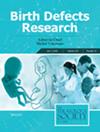Toxicological Assessment of a Standardized Dry Extract of Zea mays L. (Poaceae) Stigmas During Gestation: Effects on Maternal Parameters and Fetal Outcomes in Wistar Rats
Abstract
Background
Corn (Zea mays L., Poaceae) stigmas, popularly known as corn silk, have been traditionally used for their diuretic properties and to treat urinary tract disorders and hypertension. Although several studies have reported beneficial effects, such as anti-inflammatory and antioxidant activities, data on their safety during pregnancy remain limited. This study aimed to evaluate the effects of prenatal treatment with a standardized dry corn silk extract on maternal and fetal toxicity parameters in Wistar rats.
Methods
Corn silk was extracted with 41% (v/v) ethanol, concentrated, and spray-dried. The total flavonoid content was determined by spectrophotometry, and phenolic compounds, including maysin, were analyzed using HPLC-DAD and HPLC-ESI-MS/MS. Pregnant Wistar rats (n = 10/group) received the vehicle or extract doses of 300, 600, or 1200 mg/kg from gestational Day (GD) 0–20. Clinical signs of toxicity, body weight gain, and food and water intake were monitored. On GD 21, blood samples were collected for biochemical analysis. Reproductive performance and genotoxicity were assessed, along with histopathological examinations of selected organs.
Results
The extract contained 1.698% flavonoids, including maysin as the predominant one. No clinical signs of toxicity, changes in body weight gain, water and food intake, genotoxicity, histopathological alterations, or biochemical disturbances were observed. However, the 1200 mg/kg dose increased pre-implantation losses. No external, skeletal, or visceral malformations were detected in fetuses.
Conclusions
Under these experimental conditions, the extract did not induce maternal or fetal toxicity. Nevertheless, the 1200 mg/kg dose may interfere with early pregnancy in Wistar rats.


 求助内容:
求助内容: 应助结果提醒方式:
应助结果提醒方式:


